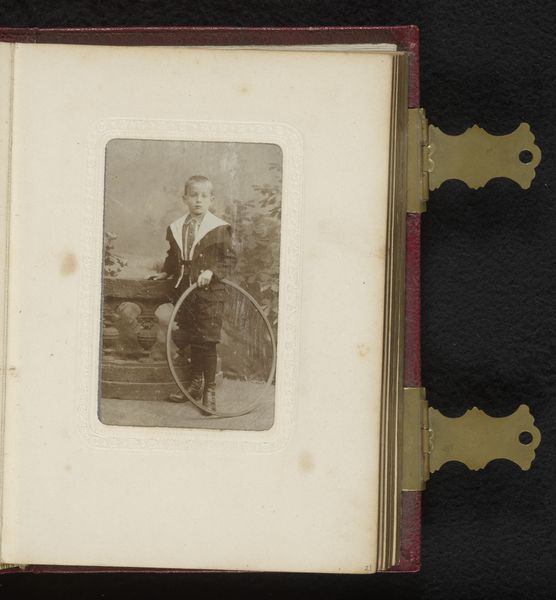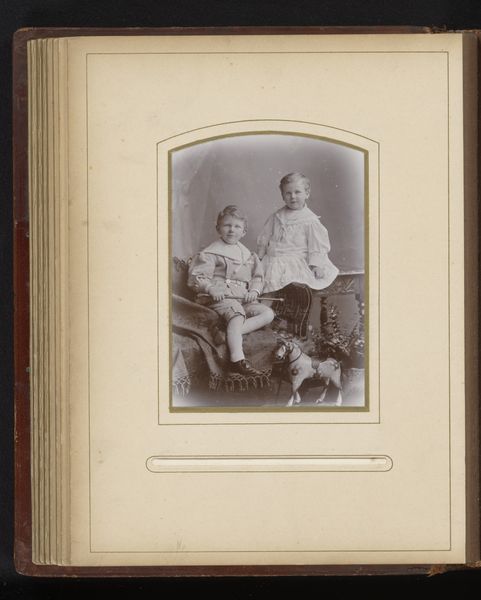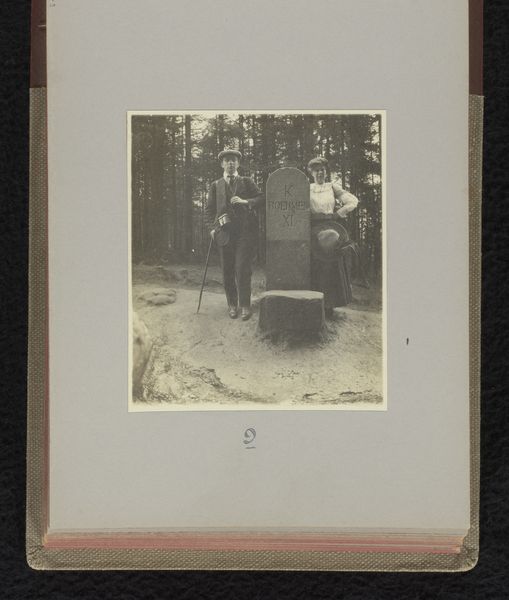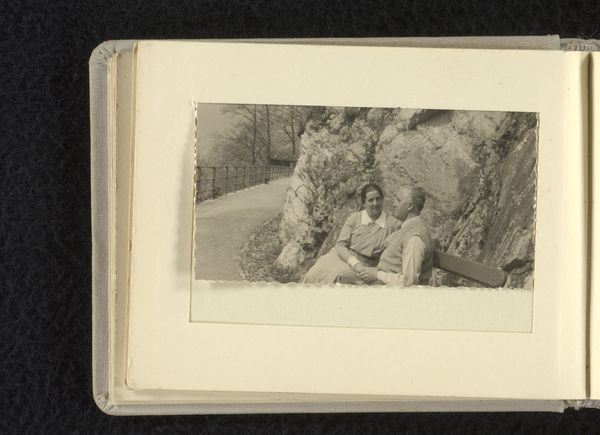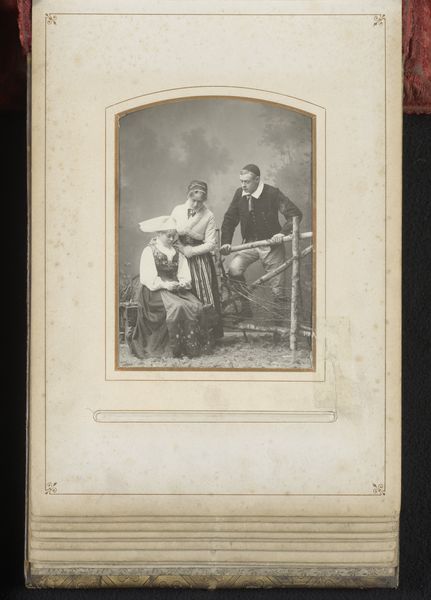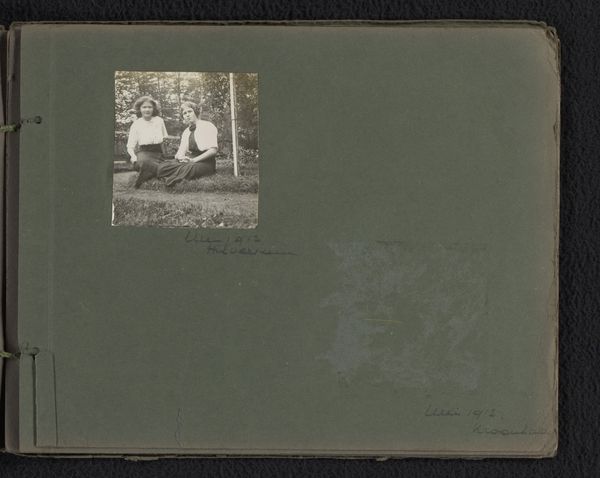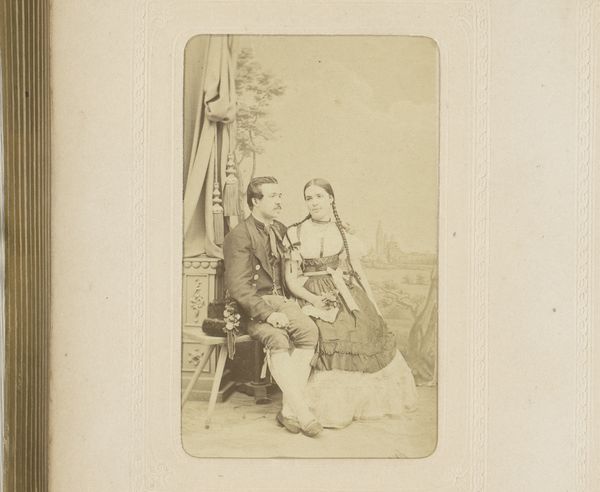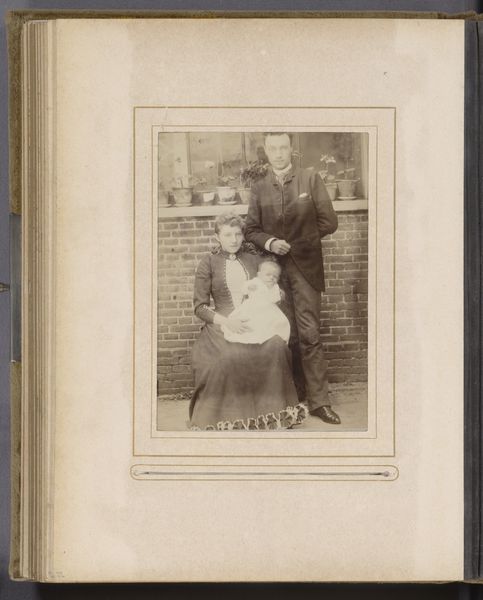
photography
#
portrait
#
tree
#
still-life-photography
#
muted colour palette
#
ink paper printed
#
dog
#
landscape
#
photography
#
group-portraits
#
genre-painting
#
watercolor
#
realism
Dimensions: height 136 mm, width 96 mm
Copyright: Rijks Museum: Open Domain
Curator: So, here we have "Familieportret in een tuin of park", which translates to "Family Portrait in a Garden or Park", thought to have been taken around 1898 or 1899. It's quite a scene captured through photography. What are your first impressions? Editor: Well, right off the bat, I’m struck by how…contained it feels. It’s like a miniature stage set, isn't it? The composition feels almost deliberately posed, a slice of domestic tranquility perfectly preserved in ink paper printed. Curator: Indeed. It's fascinating how photography was being employed at the time to both represent and construct idealized notions of family and leisure. Consider the materials: photographic paper becoming increasingly standardized and accessible. This directly affected who could participate in image-making and how. Editor: Absolutely. And there's something so earnest about the effort, you know? Everyone looking their Sunday best. Even the little dog seems to be trying its hardest to be presentable. It brings out the humor. It speaks volumes about the aspirations of the middle class, and a yearning for stability through objects that also embody status. Curator: The clothing, the furniture even—it's all part of a system of signs meant to communicate status and respectability. How they acquired those commodities, what sort of labour or access was needed. They are literally sitting pretty, supported by labour. Editor: Exactly! There's an awareness in this. But I also see the vulnerability. It's such a fragile moment they are trying to create through these material goods, almost a plea that can come with aspirations to belong and that can easily be exposed. I keep wanting to scratch at the surface a bit—imagine who held the camera, who chose the framing. Was there a power dynamic in the moment? Curator: These photographs offered new forms of labour—sitting still, following instructions. Not too unlike modern-day portrait photography where sitters must adopt constructed images of what a celebrity might wear. The image here has a deep interplay with material culture, isn't it? Editor: Agreed. The surface calm is almost jarring juxtaposed to the reality of those fin-de-siecle years in the Netherlands— a culture of contradictions where many things seemed calm on the surface but bubbling and complex underneath. The image speaks to the time through all its complex social cues and materiality. Curator: And this is a key work in terms of historical and industrial contexts of photograph production which offers a perspective to middle class performance of that period through available visual media and material display. Editor: I am certainly looking at the image quite differently than when we began, thank you.
Comments
No comments
Be the first to comment and join the conversation on the ultimate creative platform.
